- 翰林提供学术活动、国际课程、科研项目一站式留学背景提升服务!
- 400 888 0080
CIE A Level Biology复习笔记1.2.1 Eukaryotic Cell Structures & Functions
Eukaryotic Cell Structures & Functions
Cell surface membrane
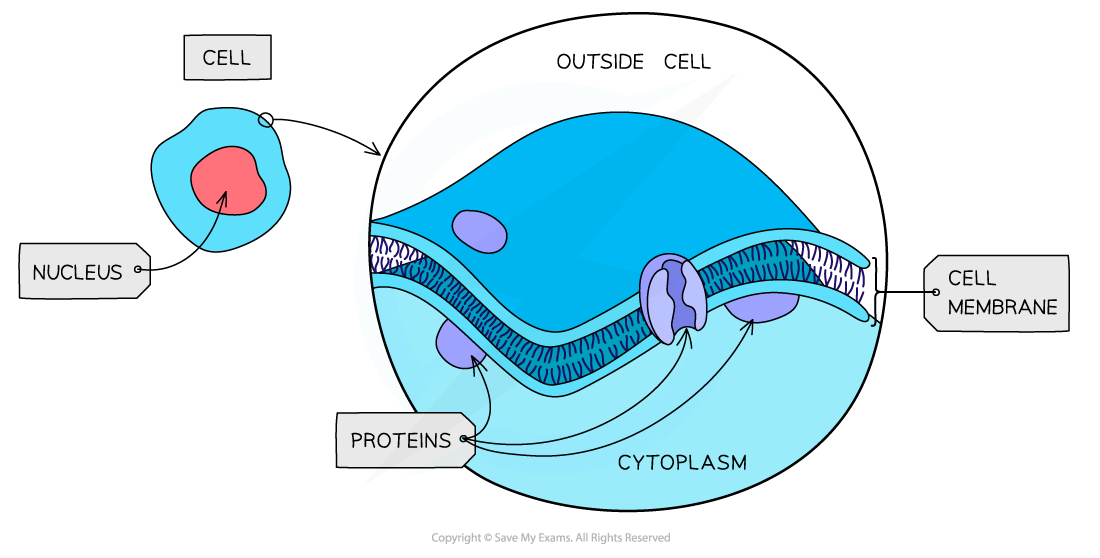
The structure of the cell surface membrane – although the structure looks static the phospholipids and proteins forming the bilayer are constantly in motion
- All cells are surrounded by a cell surface membrane which controls the exchange of materials between the internal cell environment and the external environment
- The membrane is described as being ‘partially permeable’
- The cell membrane is formed from a phospholipid bilayer of phospholipids spanning a diameter of around 10 nm
Cell wall
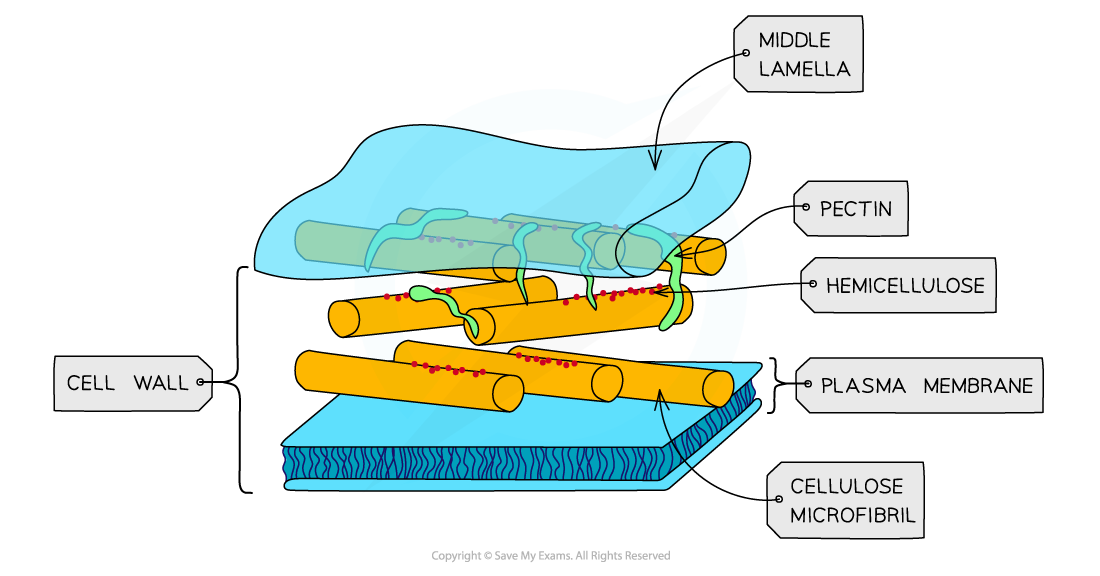
The cell wall is freely permeable to most substances (unlike the plasma membrane)
- Cell walls are formed outside of the cell membrane and offer structural support to cell
- Structural support is provided by the polysaccharide cellulose in plants, and peptidoglycan in most bacterial cells
- Narrow threads of cytoplasm (surrounded by a cell membrane) called plasmodesmata connect the cytoplasm of neighbouring plant cells
Nucleus
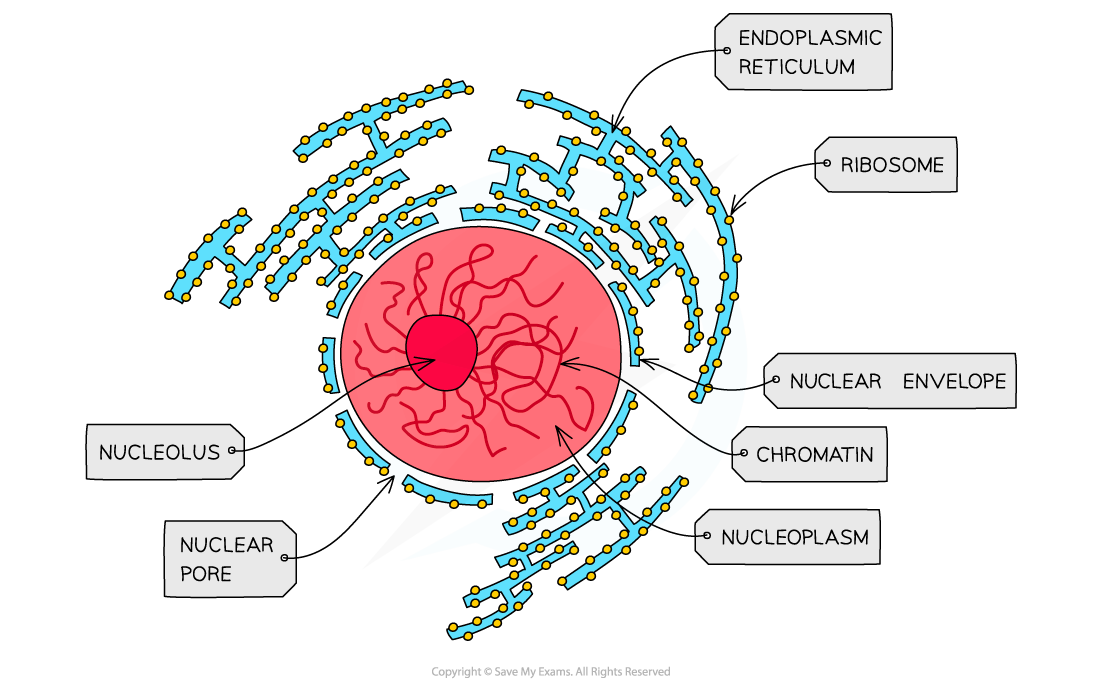
The nucleus of a cell contains chromatin (a complex of DNA and histone proteins) which is the genetic material of the cell
- Present in all eukaryotic cells, the nucleus is relatively large and separated from the cytoplasm by a double membrane (the nuclear envelope) which has many pores
- Nuclear pores are important channels for allowing mRNA and ribosomes to travel out of the nucleus, as well as allowing enzymes (eg. DNA polymerases) and signalling molecules to travel in
- The nucleus contains chromatin (the material from which chromosomes are made)
- Usually, at least one or more darkly stained regions can be observed – these regions are individually termed ‘nucleolus’ and are the sites of ribosome production
Mitochondria
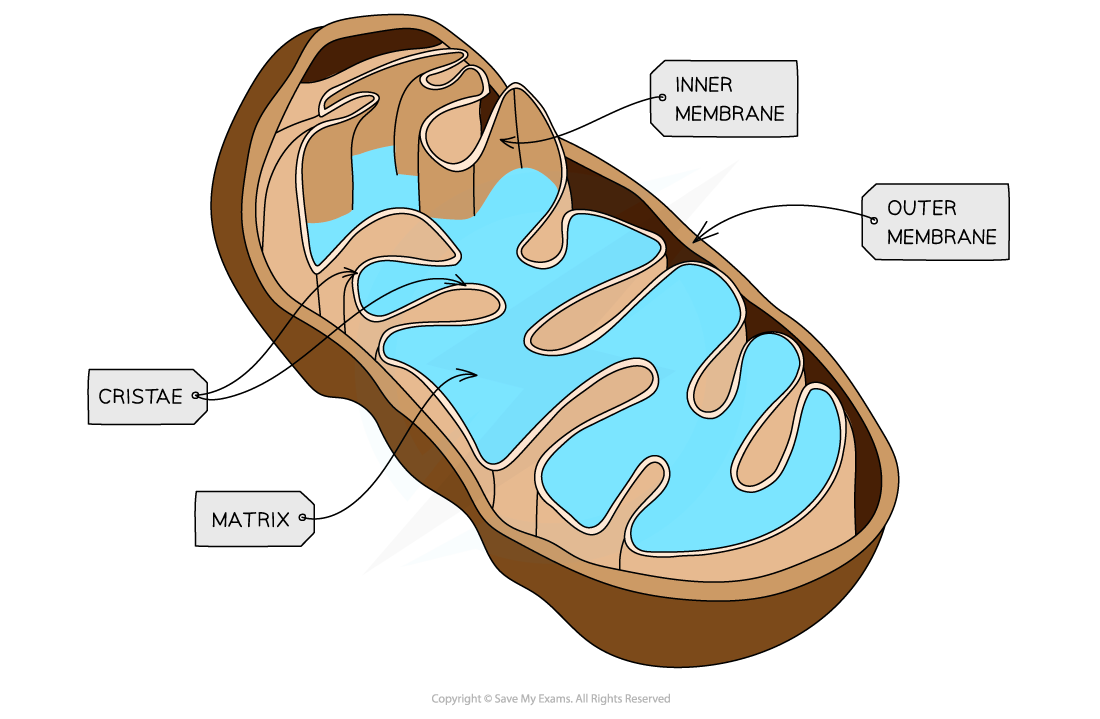
A single mitochondrion is shown – the inner membrane has protein complexes vital for the later stages of aerobic respiration embedded within it
- The site of aerobic respiration within eukaryotic cells, mitochondria are just visible with a light microscope
- Surrounded by double-membrane with the inner membrane folded to form cristae
- The matrix formed by the cristae contains enzymes needed for aerobic respiration, producing ATP
- Small circular pieces of DNA (mitochondrial DNA) and ribosomes are also found in the matrix (needed for replication)
Chloroplast
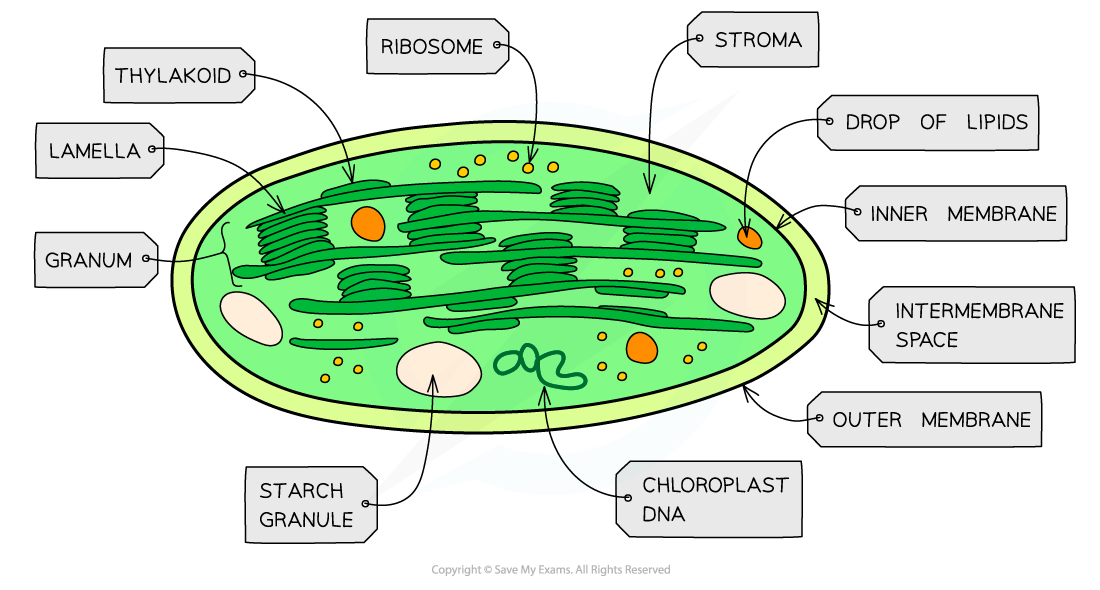
Chloroplasts are found in the green parts of a plant – the green colour a result of the photosynthetic pigment chlorophyll
- Larger than mitochondria, also surrounded by a double-membrane
- Membrane-bound compartments called thylakoids containing chlorophyll stack to form structures called grana
- Grana are joined together by lamellae (thin and flat thylakoid membranes)
- Chloroplasts are the site of photosynthesis:
- The light-dependent stage takes place in the thylakoids
- The light-independent stage (Calvin Cycle) takes place in the stroma
- Also contain small circular pieces of DNA and ribosomes used to synthesise proteins needed in chloroplast replication and photosynthesis
Ribosome

Ribosomes are formed in the nucleolus and are composed of almost equal amounts of RNA and protein
- Found freely in the cytoplasm of all cells or as part of the rough endoplasmic reticulum in eukaryotic cells
- Each ribosome is a complex of ribosomal RNA (rRNA) and proteins
- 80S ribosomes (composed of 60S and 40S subunits) are found in eukaryotic cells
- 70S (composed of 50S and 30S subunits) ribosomes in prokaryotes, mitochondria and chloroplasts
- Site of translation (protein synthesis)
Endoplasmic reticulum
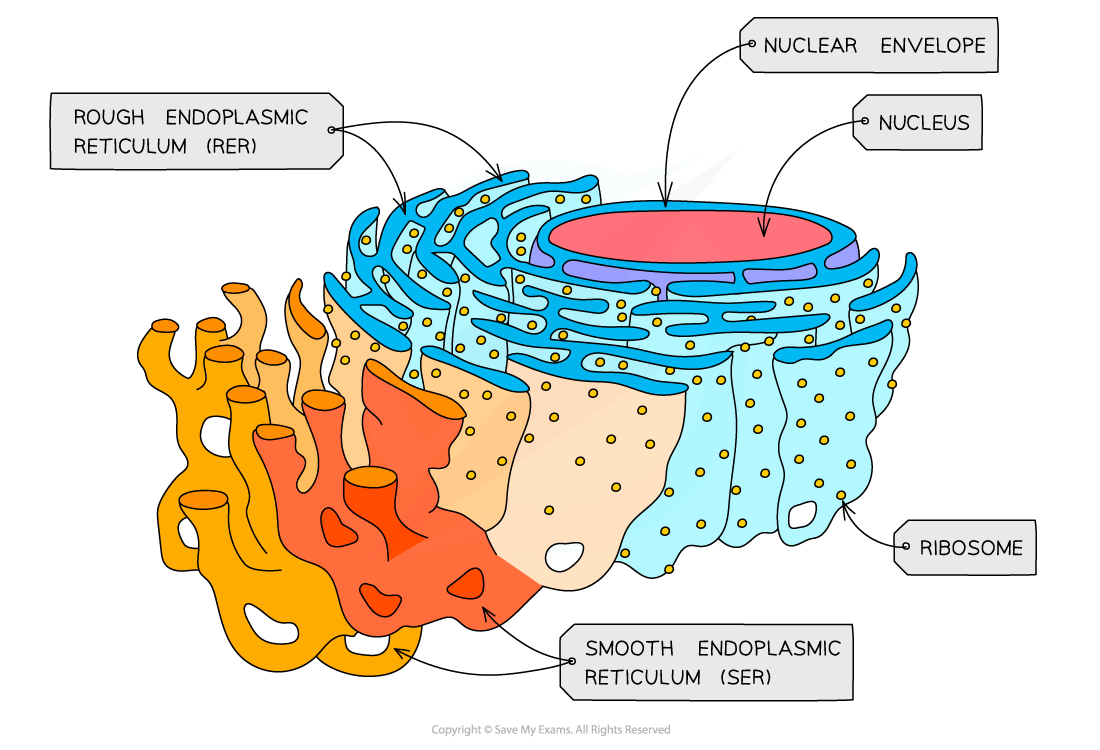
The RER and ER are visible under the electron microscope - the presence or absence of ribosomes helps to distinguish between them
Rough Endoplasmic Reticulum (RER)
- Surface covered in ribosomes
- Formed from continuous folds of membrane continuous with the nuclear envelope
- Processes proteins made by the ribosomes
Smooth Endoplasmic Reticulum (ER)
- Does not have ribosomes on the surface, its function is distinct to the RER
- Involved in the production, processing and storage of lipids, carbohydrates and steroids
Golgi apparatus (golgi complex)
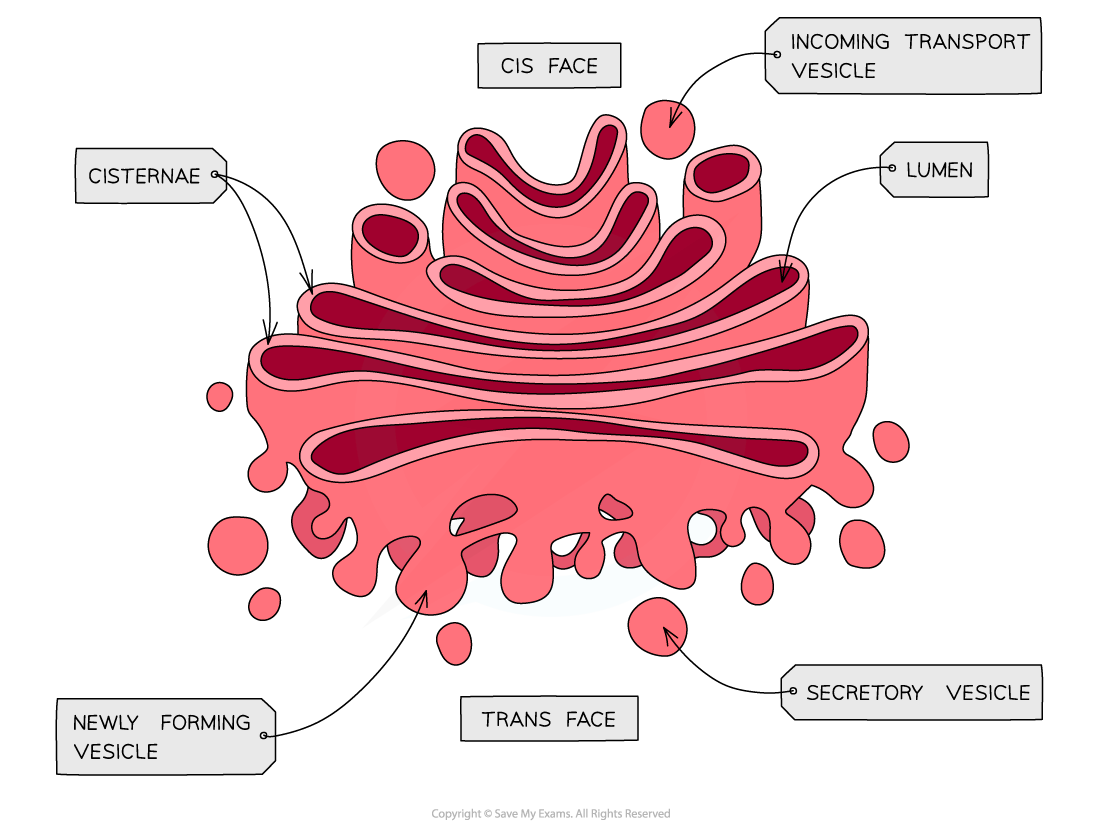
The structure of the Golgi apparatus
- Flattened sacs of membrane similar to the smooth endoplasmic reticulum
- Modifies proteins and packages them into vesicles or lysosomes
Large permanent vacuole
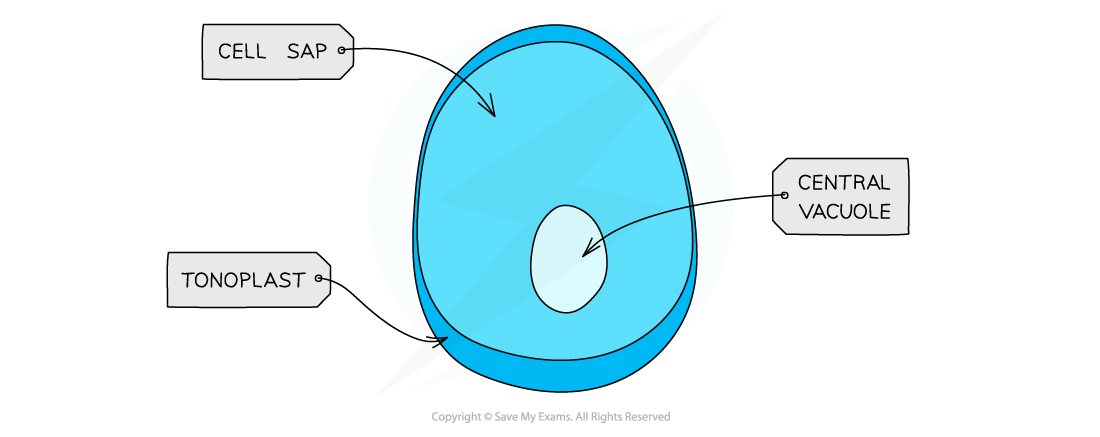
The structure of the vacuole
- Sac in plant cells surrounded by the tonoplast, selectively permeable membrane
- Vacuoles in animal cells are not permanent and small
Vesicle
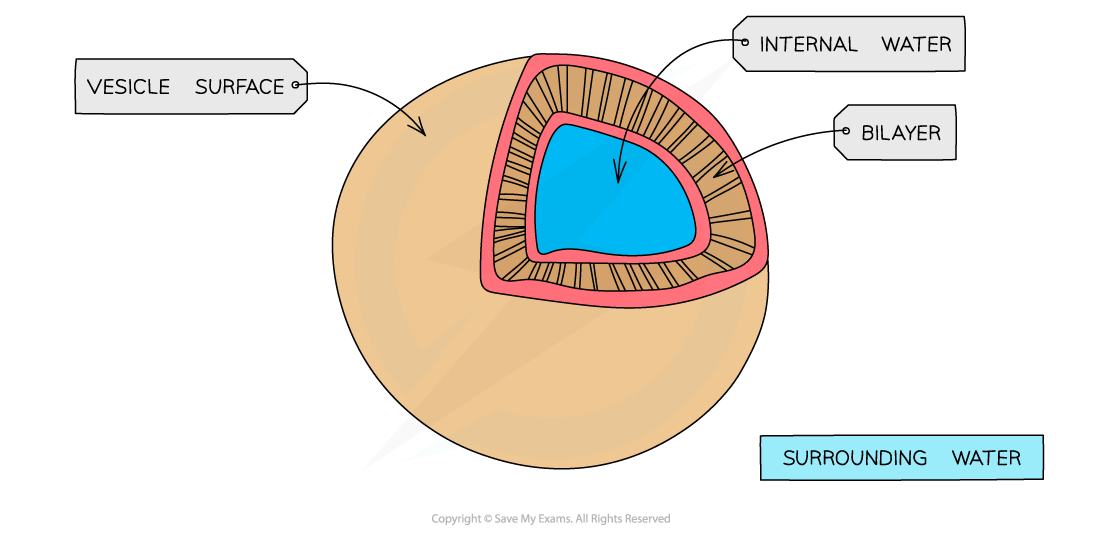
The structure of the vesicle
- Membrane-bound sac for transport and storage
Lysosome
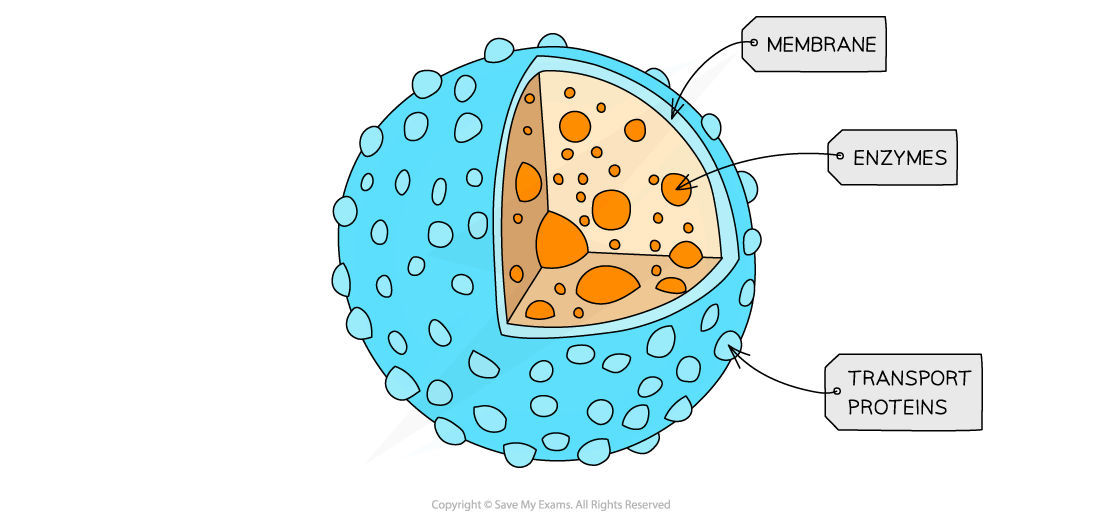
The structure of the lysosome
- Specialist forms of vesicles which contain hydrolytic enzymes (enzymes that break biological molecules down)
- Break down waste materials such as worn-out organelles, used extensively by cells of the immune system and in apoptosis (programmed cell death)
Centriole
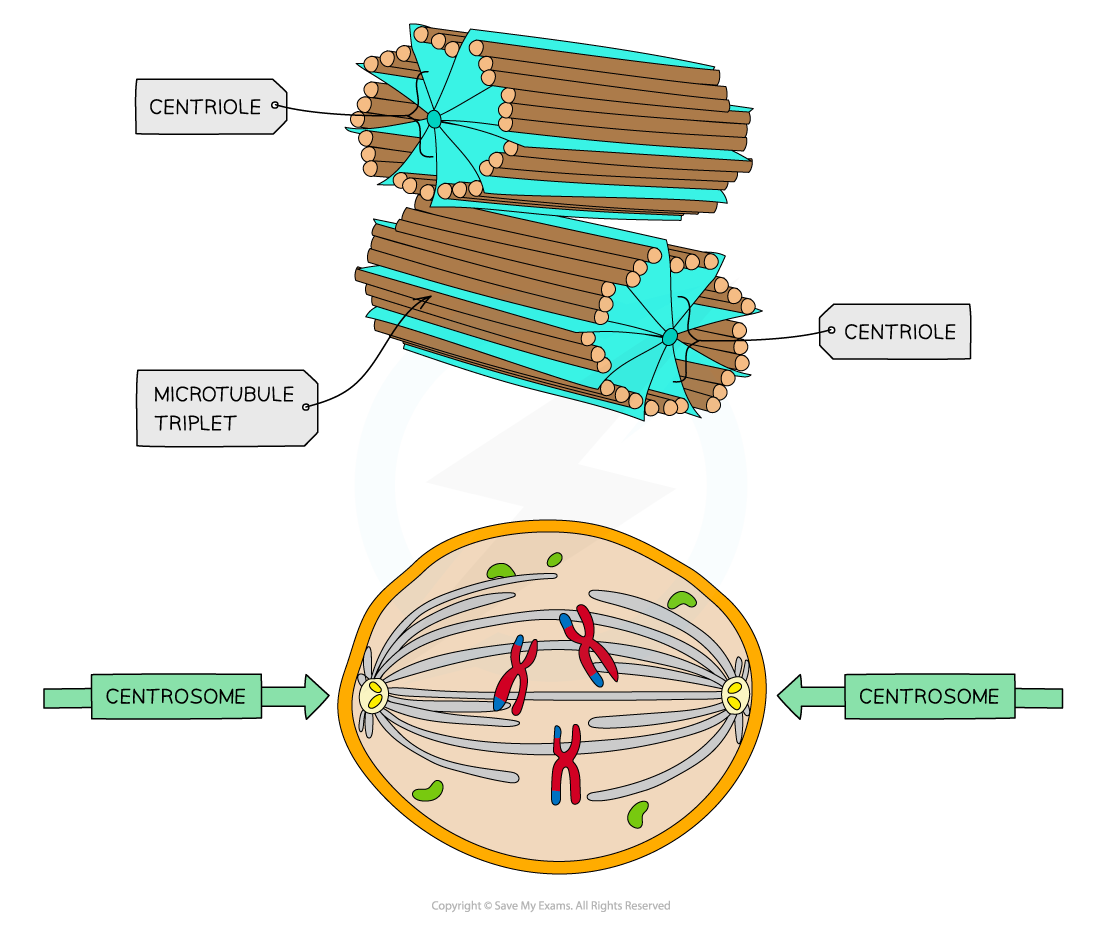
The structure of the centriole
- Hollow fibres made of microtubules, two centrioles at right angles to each other form a centrosome, which organises the spindle fibres during cell division
- Not found in flowering plants and fungi
Microtubules

The structure of the microtubule
- Makes up the cytoskeleton of the cell about 25 nm in diameter
- Made of α and β tubulin combined to form dimers, the dimers are then joined into protofilaments. Thirteen protofilaments in a cylinder make a microtubule
- The cytoskeleton is used to provide support and movement of the cell
Microvilli
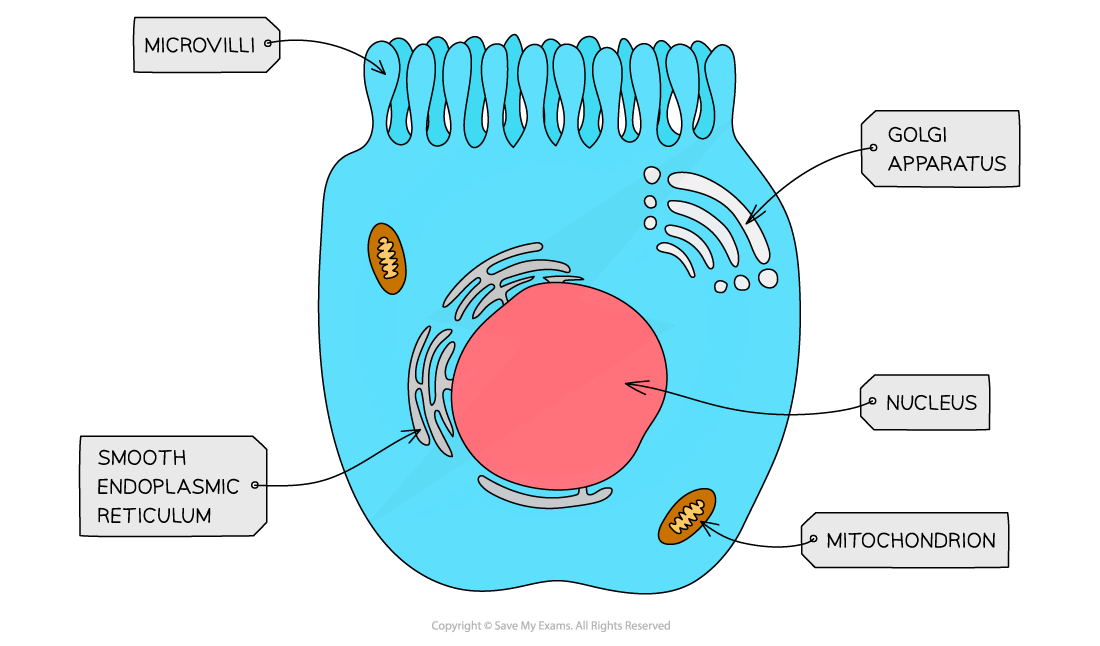
The structure of the microvilli
- Cell membrane projections that increase the surface area for absorption
Cilia
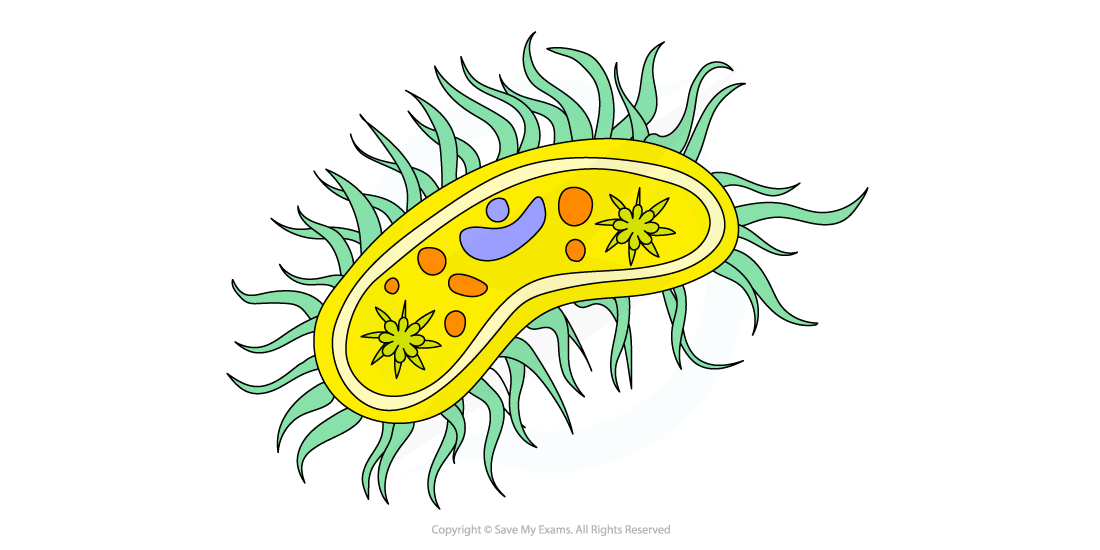
The structure of the cilia
- Hair-like projections made from microtubules
- Allows the movement of substances over the cell surface
Flagella

The structure of the flagella
- Similar in structure to cilia, made of longer microtubules
- Contract to provide cell movement for example in sperm cells
转载自savemyexams

最新发布
© 2025. All Rights Reserved. 沪ICP备2023009024号-1









